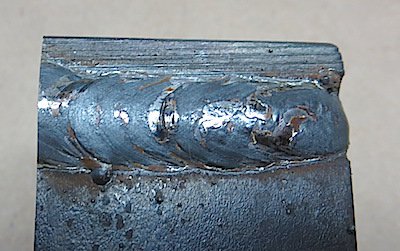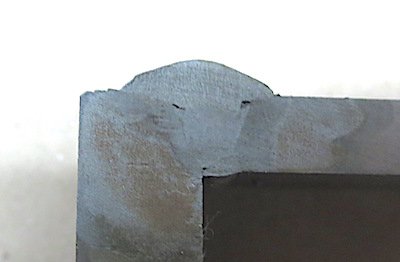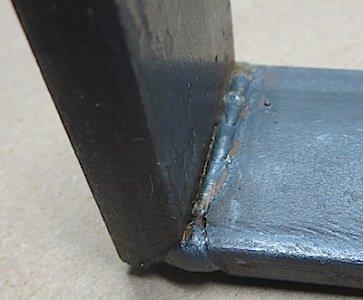- Joined
- Feb 24, 2015
- Messages
- 1,382
Once the problem with the MIG was solved, I started tests on the welds I need to make.
I beveled the pieces and spaced them about a 10th inch apart. I ran the MIG at the recommended settings for 1/4" steel. There is one 3/8" piece and one 1/4" piece. I welded with .30 wire and used a oval weave push pass with about 1/2" of stick out. The weld looks very good to me.
But, when I cut and polished a section and put some nitric acid on it, it is obvious that I got good fusion on the top half of the weld, but no fusion on the bottom half.
What can I do to increase the penetration and fusion?
Widen the gap?
Grind the bevel at a wider angle?
Increase the amperage to recommended 3/8" settings?
Maybe do a non-weaving drag pass and then a weaving pass over it?
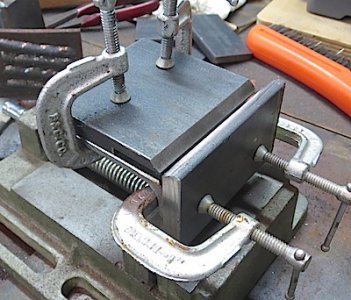
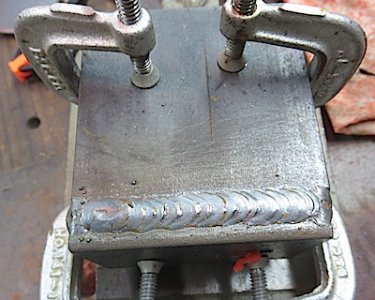
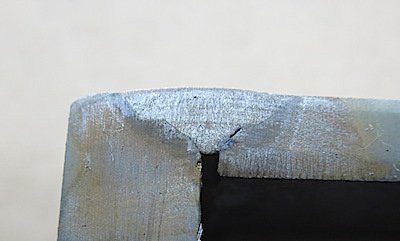
I beveled the pieces and spaced them about a 10th inch apart. I ran the MIG at the recommended settings for 1/4" steel. There is one 3/8" piece and one 1/4" piece. I welded with .30 wire and used a oval weave push pass with about 1/2" of stick out. The weld looks very good to me.
But, when I cut and polished a section and put some nitric acid on it, it is obvious that I got good fusion on the top half of the weld, but no fusion on the bottom half.
What can I do to increase the penetration and fusion?
Widen the gap?
Grind the bevel at a wider angle?
Increase the amperage to recommended 3/8" settings?
Maybe do a non-weaving drag pass and then a weaving pass over it?



Last edited:

